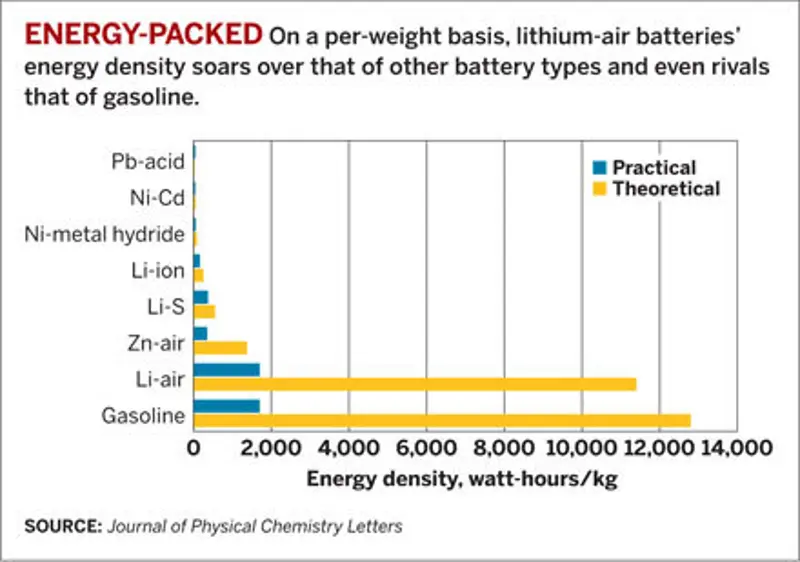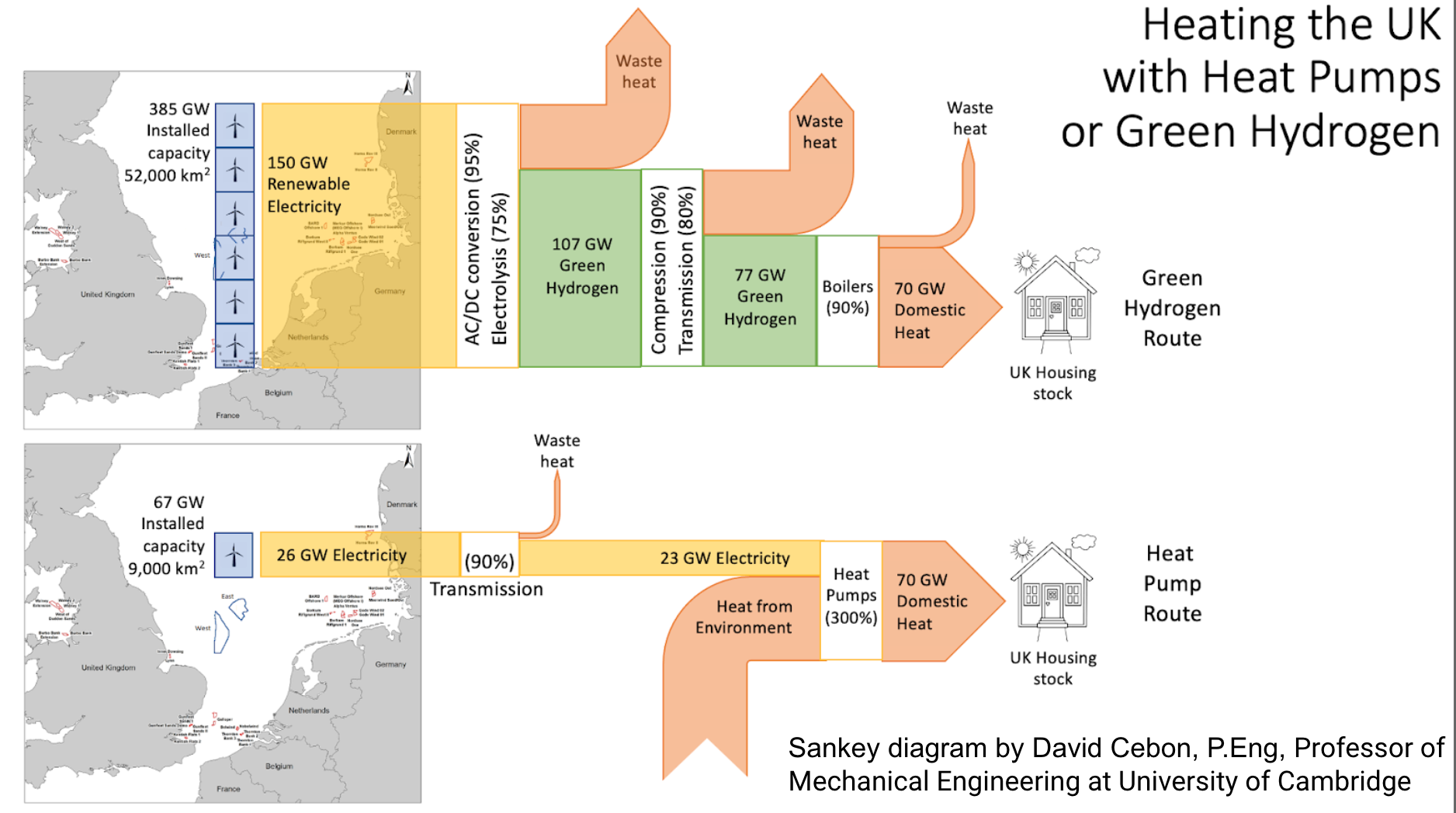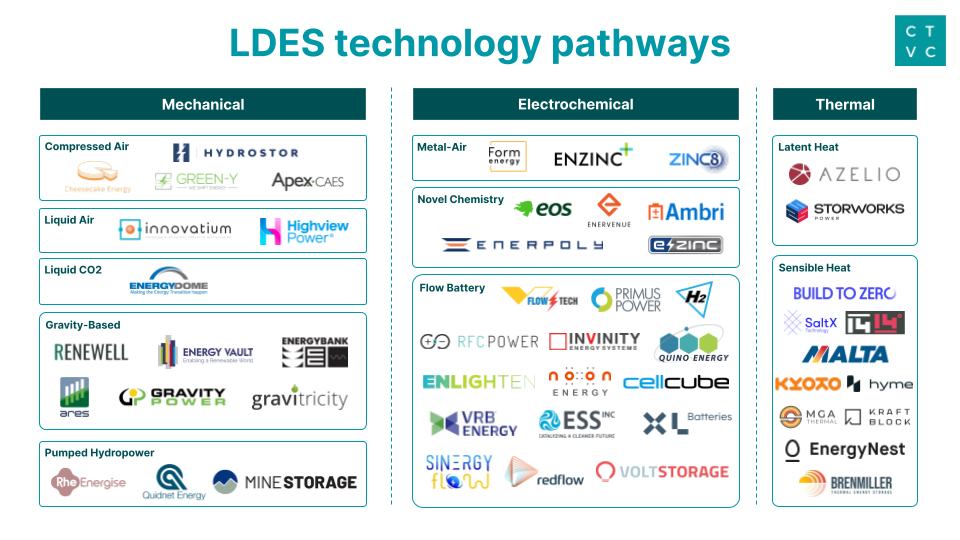The Different Types of Energy Storage
In this post I’ve collated the various articles, videos, and papers on energy storage systems I’ve come across. Most is in note form, for my reference. I’ll update it every so often with new findings. If you find any errors, please do get in touch!
Electrochemical
Lithium
Largest
- Moss Landing Power Plant, 1200MWh 300MW
Cathodes
- Lithium Nickel Manganese Cobalt Oxide: NMC, LiNixMnyCozO2
- Features: Good all-rounder
- Uses: EVs, electronics, power tools, grid storage
- Lithium Nickel Cobalt Aluminium Oxide: NCA, LiNiCoAlO2
- Uses: EVs
- Companies: Panasonic
- Lithium Manganese Oxide: LMO, LiMn2O4
- Uses: Electronics
- Lithium Iron Phosphate: LFP, LiFePO4
- Uses: Home batteries, EVs
- Lithium Cobalt Oxide: LCO, LiCoO2
- Uses: Electronics
- Lithium Titanium Oxide: LTO
- Features: Lower energy density
- Uses: Some EVs, electronics
- Sulphur
- Features: High energy density, lost cost, currently low life (100 cycles) currently but longer-living ones in labs
- Uses: EVs, drones, aircraft
- Commercialisation: 2027-2028?
- https://youtu.be/tHRoefpqMaM
- https://www.faraday.ac.uk/lis-advantages/
Anodes
- Graphite
- Lithium Titanate LTO, Li4Ti5O12
- Hard Carbon
- Tin/Cobalt Alloy
- Silicon/Carbon
- Lignin-based
- About: From waste wood from paper industry
- Features: Low energy density
- Companies: Stora Enso, Ligna Energy
- https://youtu.be/bs7CQf_F088
- Pre-lithiated silicon-dominant anodes
- Features: +50% density, 5x power vs conventional Li-ion, 80% charge in 10mins, confirmed by Idaho National Labs
- Companies: Ionblox
- https://wonderfulengineering.com/this-new-ev-battery-has-50-more-energy-density-and-can-charge-in-10-minutes/
- https://interestingengineering.com/innovation/ev-battery-startup-impressive-charging-times
- No anode
- Replacing the conventional graphite anodes solely with a copper-foil current collector.
- The copper foil became covered with irregular microscopic structures (dendrites) during recharging and discharging that “can, and will, lead to battery short circuits between the anode and cathode, which in turn can cause battery fires,”
- The new battery can hold 72 percent more energy by weight and 95 percent more energy by volume than commercial lithium-ion batteries.
- https://spectrum.ieee.org/solid-state-battery-no-anode
Lithium Air
Features
- Higher energy density (685 Wh/kg at room temperature)
- Inexpensive to produce
- Safer (is solid state)
- Slightly lower energy efficiency
Developments
- Solid instead of liquid electrolyte and uses environment air not oxygen tanks, expected 1200Wh/kg and lasts >1200 cycles
- https://cleantechnica.com/2023/02/23/new-design-for-lithium-air-battery-could-offer-much-longer-driving-range/
- https://arstechnica.com/science/2023/02/new-battery-seems-to-offer-it-all-lithium-metal-lithium-air-electrodes/
- https://cleantechnica.com/2023/02/06/researchers-report-progress-on-a-solid-state-lithium-air-battery-with-high-energy-density/
Thin-Film Lithium
Features
- Better performance, physically flexible
Lithium-ion polymer (LiPo)
About
- Electrolyte is solid polymer not liquid electrolyte
Uses
- Electronics
Features
- Higher specific density, safer
Battery Streak
- Reduced heat generated from charging → faster charging
EnergyX
- Improved technology for extracting lithium
- Using membranes, solvent extraction, ion sorption
Fast charging developments
- A team of researchers, led by Professor Noriyoshi Matsumi from Japan Advanced Institute of Science and Technology (JAIST), showcases a new approach to facilitate fast charging using a binder material which promotes Li-ion intercalation of active material.
HOS-PFM
- The HOS-PFM coating conducts both electrons and ions at the same time. This ensures battery stability and high charge/discharge rates while enhancing battery life from an average of 10 years to about 15 years.
Other Links
https://en.wikipedia.org/wiki/Research_in_lithium-ion_batteries
(Redox) Flow battery
Largest
- Dalian (China), 400/800MWh 100/200MW
About
- Two tanks of liquids
Common Types
- Vanadium
- Zinc bromine
Features
- Low density (so big), low charge/discharge rates, (Vanadium particularly) less efficient
- Long life (30 years+) and little self-discharge
- Deep discharge (to 0%)
- Non flammable and recyclable
- Zinc bromine is very cheap to manufacture and install
Uses
- Grid, UPS
- EVs (rapid recharge via replacing electrolyte)
Companies
Vanadium
- Dalian (China)
- US Vanadium (USA)
Zinc bromine
- Redflow
- Gelion
Links
https://en.wikipedia.org/wiki/Flow_battery
https://en.wikipedia.org/wiki/Zinc%E2%80%93bromine_battery
https://en.wikipedia.org/wiki/Vanadium_redox_battery
Sodium
Sodium-ion (SIB/NIB)
Features
- Less energy dense than Li-ion
- Cheap to produce, readily-available materials
Uses
- Potentially electronics/EVs
- Stationary storage (until more dense)
Commercialisation
- Possibly mass produced in 2023
Companies
- CATL
Links
https://en.wikipedia.org/wiki/Sodium-ion_battery
https://www.tycorun.com/blogs/news/top10-sodium-ion-battery-companies-in-the-world-in-2022
Sodium Sulphur
Features
- High energy density
- Safety concerns
Uses
- Grid
Links
https://en.wikipedia.org/wiki/Sodium–sulfur_battery
Sodium Aluminium
- The new sodium-based molten salt battery uses two distinct reactions. The team previously reported a neutral molten salt reaction. The new discovery shows that this neutral molten salt can undergo a further reaction into an acidic molten salt. Crucially, this second acidic reaction mechanism increases the battery’s capacity. Specifically, after 345 charge/discharge cycles at high current, this acidic reaction mechanism retained 82.8 percent of peak charge capacity.
Seawater separator
- Increase lifetime, capacity, efficiency.
https://www.bristol.ac.uk/news/2022/october/seaweed-based-battery-.html
Aluminium
Aluminium-ion
Features
- Theoretically better energy density than Li-ion
- Cheap, faster charging
- Short shelf life
Uses
- Consumer electronics/EVs
Commercialisation
- Pilot phase, possibly available in 2024
Links
https://en.wikipedia.org/wiki/Aluminium-ion_battery
Silver zinc
Features
- High specific energy
- Can be flexible
Uses
- Electronics (including flexible ones)
Links
https://en.wikipedia.org/wiki/Silver_zinc_battery
Oxygen
Carbon-oxygen
About
- Splits CO2 into C and O then re-joins
Features
- Long term (100+ hr)
- 3x more dense than Li-ion
Use
- Grid
Companies
- Noon Energy
Links
Oxygen-ion
About
- Made from ceramics
Features
- No degradation over time
- No rare elements
- Approx 1/3 energy density of Li-ion
- Works at 200-400°C
- Non-flammable
Use
- Grid
Links
https://www.eurekalert.org/news-releases/983590
https://spectrum.ieee.org/solid-state-battery-no-anode
Chitosan-zinc
About
- Crustaceans such as crabs, shrimps and lobsters have exoskeletons made of cells that contain chitin, a kind of polysaccharide that makes their shells hard and resistant. This valuable material is abundant in nature and can also be found in fungi and insects, but is usually thrown away as food waste from restaurants and a byproduct of the food industry.
- Chitin can be synthesised into a firm gel membrane and used as an electrolyte for a battery. By combining this chitosan electrolyte with zinc, Hu’s team was able to create a renewable battery.
- The battery is 99.7% energy efficient even after 1,000 battery cycles, which is about 400 hours.
- The batteries are not flammable and the two-thirds of the battery made of chitosan can break down in soil thanks to microbial degradation in just five months, leaving behind recyclable zinc.
Links
Air
Iron Air
About
- Rusting and unrusting
Features
- Long term (100+ hr)
- Cheap (readily available materials), non flammable
- Low density, slow charging
Uses
- Grid
Companies
- Form Energy (USA)
Links
https://www.popularmechanics.com/science/energy/a42532492/iron-air-battery-energy-storage/
Zinc air
Features
- Long term (100+ hr)
- Relatively cheap (but more than iron air)
- Low density, slow charging
- Issues with dendrite build-up on electrode
- ~65% efficient
- Non flammable
Uses
- Grid
Companies
- Zinc8 (Canada)
Links
Solid state
About
- A technology not a chemistry
- Mostly seems to apply to lithium-based batteries for now (in part because they are the most popular)
Features
- More energy dense
- Safer
- Potentially longer life
- Theoretically lower cost
Developments
Reducing short-circuiting
Lithium metal batteries with solid electrolytes have been slow to develop due to mysterious short-circuiting and failure. According to the team, the issue was down to mechanical stress, which was induced while recharging the batteries. Chueh’s team is looking at ways to use these very same mechanical forces intentionally to toughen the material during manufacturing, much like a blacksmith anneals a blade during production.
https://cleantechnica.com/2023/01/21/bmws-excellent-solid-state-ev-battery-adventure/
Argyrodite
- Argyrodite as solid-state electrolyte.
- High Li-ion concentration, high stability.
- The main obstacle for argyrodite solid-state batteries is to maximize the structure, in order to meet or beat the ionic conductivity of liquid electrolytes. The new research describes the successful synthesis of a high-performing solid electrolyte in a “one-pot” process, that can be carried out at room temperature, under normal pressure, and completed in less than 15 hours.
Isostatic Pressing
- This process uses fluids and gases like water, oil or argon inside a machine to apply consistent pressure across a battery component, creating a highly uniform material.
- Could make battery production easier and faster while creating better conditions for energy flow.
- May also allow manufacturing the three battery layers as a single, dense system rather than creating them separately before joining them.
3D-printed solid state
- 3D printing instead of roll to roll
- 40% less material (so cheaper and lighter), smaller machinery, can print in any shape, 80% capacity in 15mins (C5), expects 800/1000Wh/l, longer life than traditional Li-ion
https://www.fastcompany.com/90851150/this-startup-can-3d-print-a-battery-into-any-shape-you-want
https://cleantechnica.com/2023/02/16/sakuu-announces-3d-printed-solid-state-battery-success/
Mechanical
Compressed air (CAES)
Largest
- McIntosh CAES Plant, 2.9GWh
Features
- Issues with change in heat as pressure changes
- 20~70% efficiency depending on method and heating/cooling
Uses
- Grid
- Pneumatics
Links
https://en.wikipedia.org/wiki/Compressed-air_energy_storage
Liquid air (LAES)
About
- Supercool air (more dense) and store
Features
- ~25% efficient, but 70%+ if heating/cooling captured
- Modular, bigger = cheaper
- Long duration
Uses
- Grid
Companies
- Highview Power
Links
Compressed CO2
About
- Compress CO2 into a dome
Features
- 6~11x more dense than CAES (but still much less than Li-ion)
- 70-80% efficient
- Cheaper than Li-ion, LAES
- 24+ hours duration
- 30+ year lifespan
Uses
- Grid
Companies
- Energy Dome
Links
Ocean tanks
About
- Compresses water/air into underwater tank
Uses
- Good for offshore wind (tank could be used to anchor wind turbines)
- Easily scaled
- 20+ year lifespan
- 70~80% efficiency possible
Companies
- Ocean Grazer
- StEnSea project
- FLASC project
Links
Pumped hydro
Largest
- Fengning Pumped Storage Power Station, 40GWh, 3.6GW
About
- Pumps water high using energy, releases through generator via gravity to generate energy
Features
- Low density
- Requires geographical features - the larger the height difference between the top and bottom the better
- Can be huge
Links
Thermal
Heat used to boil water to power steam turbine, or just moved around for heating directly.
Links
Molten salt
Largest
- Ouarzazate Solar Power Station, Morocco, 3GWh, 510MW, world’s largest solar thermal
About
- Salt heated and melted by concentrated solar
Links
Molten metal
About
- Magnesium or Antimony
Features
- High self discharge rate
- High energy density
- Highly scalable
- Long lifecycle (20+ years), can deep discharge
- ~80% efficient
- Cheaper
- Fairly simple
- Need to be kept hot so some safety concerns
Uses
- Grid
Companies
- Ambri
Links
Bricks
About
- Heats bricks to 1500C
Features
- 40 year lifespan
- Stay warm for hours or days
- Simple
Links
Hot water
Largest
Mustikkamaa heat storage, 11.6GWh, hot water
Sand
Features
- Seasonal storage
- 50 year lifespan
- 3x more energy dense than water
- Low efficiency if converting back to electricity
- 8MWh largest right now
Companies
- Polar Night Energy
Links
Other
Hydrogen
Massless
- The batteries in today’s electric cars constitute a large part of the vehicles’ weight, without fulfilling any load-bearing function. A structural battery, on the other hand, is one that works as both a power source and as part of the structure – for example, in a car body. This is termed ‘massless’ energy storage, because in essence the battery’s weight vanishes when it becomes part of the load-bearing structure.
- It contains carbon fibre that serves simultaneously as an electrode, conductor, and load-bearing material.
- The battery has an energy density of 24 Wh/kg, meaning approximately 20 percent capacity compared to comparable lithium-ion batteries currently available. But since the weight of the vehicles can be greatly reduced, less energy will be required to drive an electric car, for example, and lower energy density also results in increased safety. And with a stiffness of 25 GPa, the structural battery can really compete with many other commonly used const
https://www.sciencedaily.com/releases/2021/03/210322091632.htm
Non-rechargeable
Aluminium-air
- Very high energy density
- Non-rechargeable without replacing anodes
https://en.wikipedia.org/wiki/Aluminium–air_battery
Other Links
https://en.wikipedia.org/wiki/Energy_storage
https://en.wikipedia.org/wiki/Rechargeable_battery
https://en.wikipedia.org/wiki/Comparison_of_commercial_battery_types
https://en.wikipedia.org/wiki/Metal–air_electrochemical_cell
https://en.wikipedia.org/wiki/List_of_energy_storage_power_plants
https://en.wikipedia.org/wiki/List_of_largest_power_stations#Storage_power_stations
https://en.wikipedia.org/wiki/Battery_storage_power_station
https://en.wikipedia.org/wiki/List_of_electric-vehicle-battery_manufacturers
https://www.eia.gov/analysis/studies/electricity/batterystorage/
https://www.youtube.com/playlist?list=PLnTSM-ORSgi51JjqvxlP0JTYSU0-910Ks [Battery technology playlist by Undecided with Matt Ferrell]



